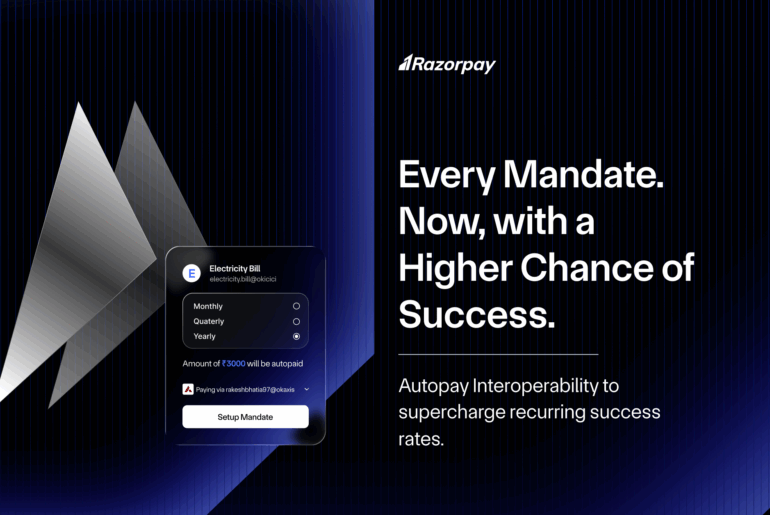Imagine you run a small retail store, and a customer is ready to make a purchase using UPI. You have a steady stream of customers, and UPI has made transactions quick and efficient – most of the time. As the customer attempts to pay using their UPI app, you both wait for the confirmation, but instead, a payment failure notification appears. Now you are wondering why the transaction was unsuccessful, making other customers wait longer.
Despite UPI being popular and convenient, such issues are not uncommon. Handling billions of transactions each month, UPI has transformed digital payments in India. Yet, as with any system, it’s not without its glitches. For businesses like you, encountering these failures can be confusing and disruptive, especially when you don’t understand why they happen or how to address them. Let’s explore why these failures occur, how they impact businesses like yours, and what can be done to resolve them.
What are the Major Reasons for UPI Payment Failures?
UPI payment failures can generally be categorized into two types: Business Declines and Technical Declines. Business declines are often due to human error, for example when a customer incorrectly enters their UPI PIN or forgets that there isn’t enough balance in their account. In contrast, technical declines typically stem from system or processing errors.
- Business Declines
- Loss of Sale due to Customer Decisions: Businesses face a huge loss of sales and many are confused about how this happened. The main reason for this is when customers abandon transactions midway, either by changing their minds or looking for better offers. For instance, customers might add items to their cart on Amazon, but then decide to wait for a discount or find a better deal elsewhere, leading to an incomplete transaction.
- Incorrect PIN / UPI ID Entry: Imagine a customer trying to pay for their coffee, but mistakenly enters an incorrect PIN. This simple error will cause the payment to fail, leaving the business wondering why the payment didn’t go through.
- Bank Limits: Let’s say from bank to bank the maximum limit for daily transfer through UPI varies from 25k to 1L for UPI transactions. If a customer tries to pay an amount exceeding their bank’s limit, the transaction will be declined. Businesses might not be aware of these limits and could misinterpret the failure as a technical issue.
2. Technical Declines
- Bank Downtimes: When a bank’s systems are down, transactions cannot be processed. For example, if a customer is trying to pay for their Uber ride and the bank’s server is down, the transaction will fail. Even if UPI apps, like PhonePe, detect that SBI is down, it might not show the payment option to prevent the transaction from failing.
- Delayed Responses: Payments can fail if the bank takes too long to respond to the transaction request. Even top banks with robust infrastructures can experience these issues due to UPI transactions’ high volume and complexity. Businesses might find it hard to explain the issue to customers or resolve it quickly.
Related Read: UPI Payment Failed? Here’s What You Can Do
How Payment Failures Impact Merchants?
- Customer Acquisition Costs: High customer acquisition costs mean losing a transaction due to payment failure is costly. Businesses invest heavily to attract customers, and a failed transaction can waste that investment.
- Operational Costs: Managing payment failures increases operational costs as resources are diverted to resolve these issues.
- Customer Dissatisfaction: Frequent payment failures can lead to dissatisfied customers and negative word-of-mouth, particularly harmful to new or emerging businesses.
The Razorpay Solution: Making UPI Payments Seamless and Error-free
- Technical Decline Solutions
Here are 3 solutions that ensure your systems can never fail:
- Error Mapping
Razorpay’s error mapping module translates complex NPCI error codes into understandable terms for businesses. This helps businesses identify the source of errors and provides actionable steps for customers to retry the payment successfully. By offering clear reasons, sources, and descriptions for payment failures, Razorpay helps businesses guide customers through successful retries. Here are 6 common NPCI error codes along with their descriptions:
- U69: The collect request expired as the customer took more time to complete the payment.
- Z9: Insufficient funds in the customer’s bank account
- U28: Customer’s bank (where the customer holds a bank account) is down
- Z7: Too many transactions within a specific interval of time as set by the customer’s bank
- Z8: Per transaction limit exceeded as set by the customer’s bank
- U30: Debit has failed. This can happen if the customer’s bank is down or there is any issue in debiting the bank account.
- Turbo UPI
Razorpay Turbo UPI creates a streamlined payment experience by reducing dependencies on third-party apps. It offers customers a 1-step in-app payment process, making it faster and reducing the likelihood of mid-transaction drop-offs.
- Dynamic Routing
Razorpay uses a best-in-class ML model for dynamic routing, ensuring that the best available terminal is selected for every transaction. This smart routing detects gateway degradations or unplanned downtimes within seconds, minimizing the impact on payments.
2. Business Decline Solutions
Whether you’re a budding entrepreneur or a seasoned enterprise, our suite of cutting-edge solutions ensures smooth UPI sailing. Here are 2 best solutions, businesses like you can adopt:
- QR on Desktop
Razorpay offers dynamic QR codes on desktops, providing an intuitive experience for you to scan with your mobile phone and pay, much like you would in an offline shop. This makes the payment process seamless and reduces the chances of errors.
- VPA Validation
This feature adds an extra layer of validation by checking your UPI ID before you proceed with the payment. It ensures that typos, wrong UPI IDs, and invalid UPI IDs are flagged to the customer, preventing transaction failures due to incorrect details.
Conclusion
While UPI payment failures are an unavoidable aspect of digital transactions, understanding their causes and implementing targeted solutions can significantly reduce their frequency and impact. With tools like those offered by Razorpay, businesses can better manage these failures, enhancing customer satisfaction and maintaining business continuity.



